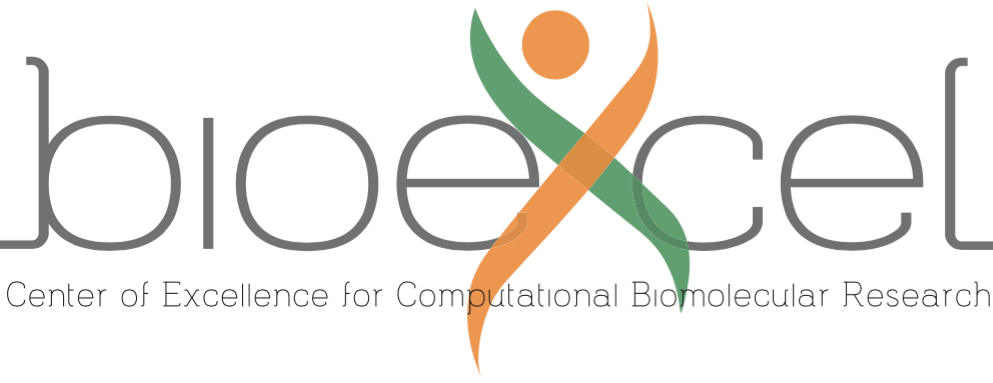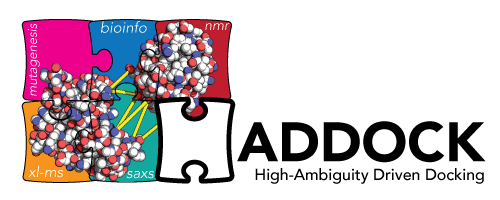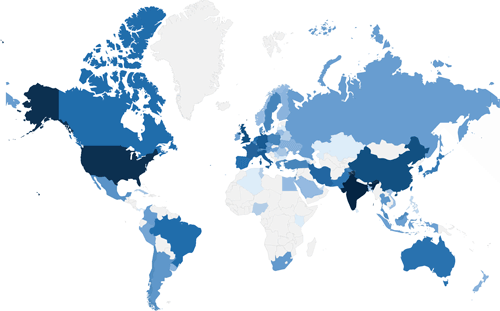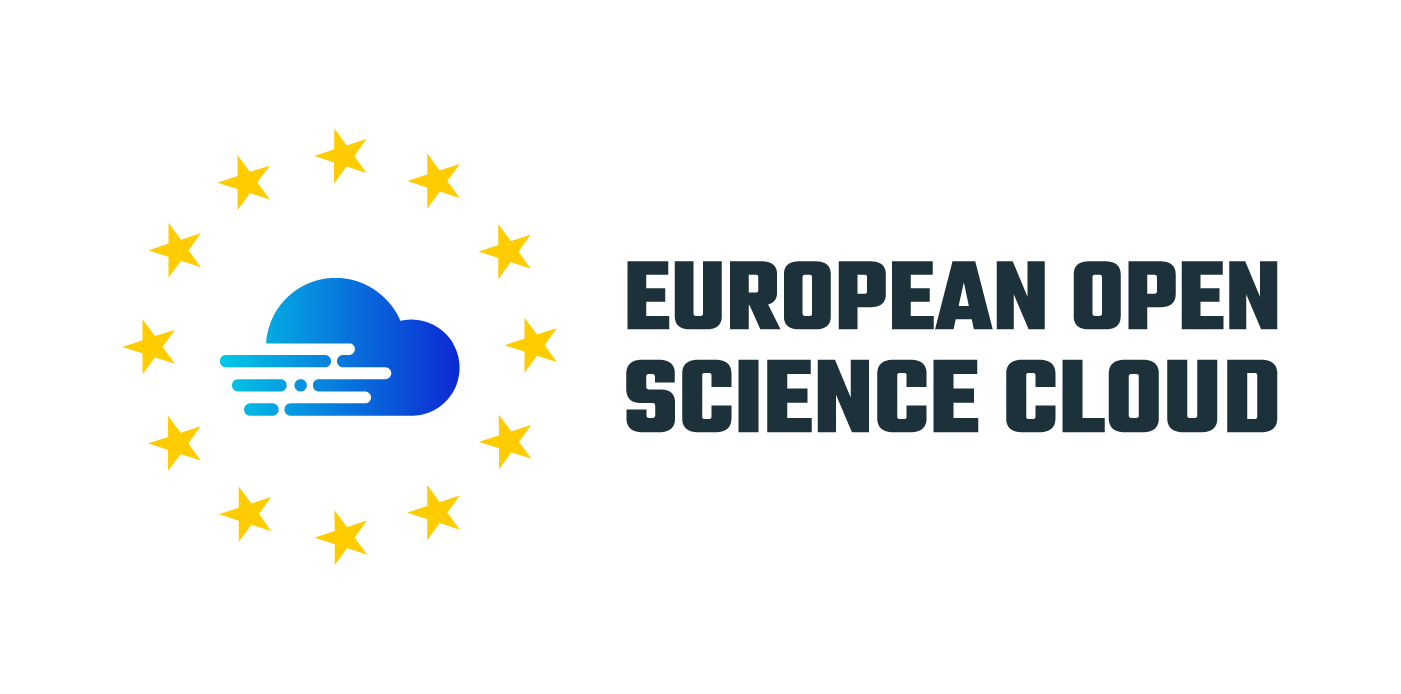- HADDOCK (High Ambiguity Driven protein-protein DOCKing) is an information-driven flexible docking approach for the modeling of biomolecular complexes. HADDOCK distinguishes itself from ab-initio docking methods in the fact that it encodes information from identified or predicted protein interfaces in ambiguous interaction restraints (AIRs) to drive the docking process. HADDOCK can deal with a large class of modeling problems including protein-protein, protein-nucleic acids and protein-ligand complexes.
- More information about HADDOCK2.2 can be found on the HADDOCK2.2 website
- Read also what an independent review by Moreira et al. has to say about our software...
- HADDOCK is one of the flagship software in the EU H2020 BioExcel
Center of Excellence for Biomolecular Research.

- The access of HADDOCK web server is free for non-profit users upon registration.
- Reference for use of the server
- G.C.P van Zundert, J.P.G.L.M. Rodrigues, M. Trellet, C. Schmitz, P.L. Kastritis, E. Karaca, A.S.J. Melquiond, M. van Dijk, S.J. de Vries and A.M.J.J. Bonvin (2016). "The HADDOCK2.2 webserver: User-friendly integrative modeling of biomolecular complexes." J. Mol. Biol., 428, 720-725 (2015).
-
R. Vargas Honorato, P.I. Koukos, B. Jimenez-Garcia, A. Tsaregorodtsev, M. Verlato, A. Giachetti, A. Rosato and A.M.J.J. Bonvin (2021).
"Structural biology in the clouds: The WeNMR-EOSC Ecosystem."
Frontiers Mol. Biosci., 8, fmolb.2021.729513 (2021).
- HADDOCK2.2 webserver
- REGISTRATION: To use the HADDOCK docking server you must have registered for an account. If you do not have a account yet you can register here
- Note: The HADDOCK server might busy at times and/or closed to users because of workshops, tutorials or CAPRI runs. The Grid-enabled version of the HADDOCK server remains however always open.
-
SERVICES:
- HADDOCK server: the Expert interface (requires Expert level access)
- HADDOCK server: the Refinement interface (requires Expert level access)
- HADDOCK server: the Guru interface (requires Guru level access)
- HADDOCK server: the Multi-body interface (requires Guru level access)
The default HADDOCK settings used by the server can be found here
A list of modified amino acids supported by HADDOCK can be found here
- HADDOCK help center
- You can post questions regarding the use of the HADDOCK web server using the BioExcel HADDOCK support center.
- Refer further to the online HADDOCK software page and its manual.
- The WeNMR site also provides a number of HADDOCK tutorials.
- HADDOCK webserver statistics
- Server statistics generated on: 2024-04-20 08:15:56
- Number of running requests on alcazar: 0 and of which 0 on the WeNMR/EOSC/EGI grid
- Number of requests being processed on alcazar: 0 of which 0 for the grid server
- Number of queued requests on alcazar: 4 of which 3 for the grid server
- Total number of served requests since June 1st 2008: 630716 , of which 442646 on the WeNMR grid
- Number of COVID-19 related served requests since April 1st 2020: 93448
- For more statistics including HADDOCK2.4 see here
- Server example
- An example of the server output for the e2a-hpr example provided with the HADDOCK distribution can be found here. This is the result of the E2A-HPr demo run below via the "easy interface" using only chemical shift perturbations.
- Tutorials
- A demo web form for the easy interface with pre-loaded parameters is available here.
It corresponds to the E2A-HPR docking example based on NMR chemical shift perturbations.
Various tutorials describing the use of the HADDOCK web portal with various combinations of data are available here
A demo of the easy interface based on the above tutorial is available in YouTube, together with a 3 hour recent lecture on HADDOCK by Prof. A. Bonvin
And finally a SBGrid webinar by Prof. A. Bonvin describing the differences between using the webserver and a local version of HADDOCK is available on YouTube









